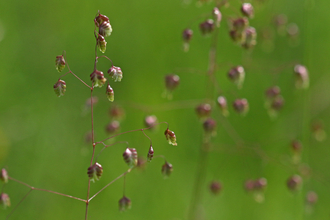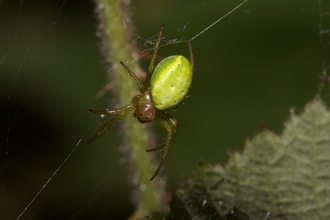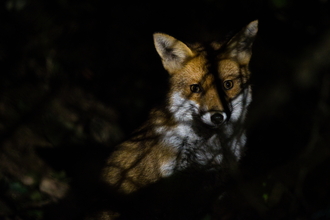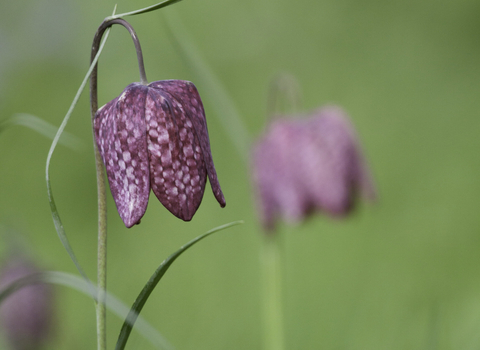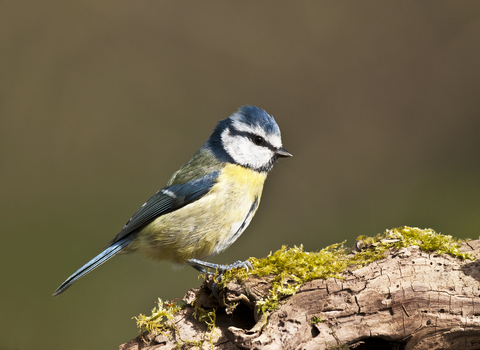Although small and easily overlooked there are over 350 mosses and 95 liverworts, collectively known as bryophytes, recorded in Worcestershire. Mosses are flowerless plants with leaves that are spirally arranged around a stem. They have two basic growth habits: upright tufts or cushions (acrocarpous) and sprawling (pleurocarpous). Liverworts come in two forms: leafy liverworts with a stem and distinct leaves and thalloid liverworts that usually consist of flat, elongated plates of tissue growing close to the substrate. Mosses and liverworts grow in a wide variety of habitats and on many substrates. They can be studied year round but are at their best in winter when other plants have died down.
We asked Ann Hill, an ecologist and appointed bryophyte recorder for Worcestershire, to tell us more about these resilient species.
Heath star moss by Ann Hill
Heath star moss Campylopus introflexus
This is a common weed species first recorded in the UK in 1941. It forms 1-4cm tall tufts or patches (sometimes extensive) and is conspicuous when dry by the star-like hairpoints of the upper leaves. The moss is a pioneer of bare acid soil, thin sandy soil at the edge of tracks, on old logs and walls.
Lateral cryphaea by Ann Hill
Lateral cryphaea Cryphaea heteromalla
This species grows in dull or dark green patches on bare bark or through a thin layer of other bryophytes, in particular on elder, ash and willow in sheltered humid conditions. The main stems creep along the bark whereas the erect branches project stiffly away. The projecting stems are best spotted by looking at the mossy trunks of trees and shrubs in profile.
Grey-cushioned grimmia by Ann Hill
Grey-cushioned grimmia Grimmia pulvinata
This is one of the most distinctive cushion mosses of tomb stones, wall tops and concrete. The leaves have a long silvery hair tips that give the cushions a hoary, greyish appearance. Fruit capsules are common and are held on a long curved seta (short stalk) partially buried amongst the leaves; the seta straightens as the plant ages.
Cypress-leaved plait-moss by Ann Hill
Cypress-leaved plait-moss Hypnum cupressiforme
This is one of Worcestershire’s most abundant and most variable moss with many varieties and similar species. It has a moderately robust habit, forming prostrate mats on trees, both in woods and in the open, and on logs, walls, rocks, roofs and occasionally on the ground. The leaves are strongly curved and finely pointed and often overlap in a symmetrical way as on a cypress branchlet.
Common liverwort by Ann Hill
Common liverwort Marchantia polymorpha subsp. ruderalis
This species is a thallose liverwort almost always found in man-made and disturbed habitats. The plant is thick and leathery with an irregular black midrib. The photo shows the liverwort in the fertile state with “umbrella-like” male and female receptacles, which are disc-shaped in the male and nine-rayed in the female and raised symmetrical gemma cups, which become new liverworts.
Forked veil-wort by Ann Hill
Forked veilwort Metzgeria furcata
This grows as a flattened thin coating on the trunks and branches of a wide range of deciduous and evergreen trees and shrubs (but rarely on conifers). It is also found on dead wood and rock surfaces. The liverwort is ubiquitous throughout Worcestershire. It has a clearly defined narrow midrib with narrow (1-1.5mm wide), irregularly forked, strap-shaped branches that adhere closely to the substrate.
Wood bristle-moss by Ann Hill
Wood bristle-moss Orthotrichum affine
This species is a common epiphyte on the exposed trunks and branches of trees and shrubs in open woodland, towns, roadsides and along watercourses. It is occasionally found on walls. The moss forms small, loose tufts of a dull, dark-green colour. Its abundant capsules (held on short stalks), are only just visible projecting from amongst the upper leaves. It can be found all year round.
Lesser featherwort by Ann Hill
Lesser featherwort Plagiochila porelloides
This is a green to dark-green leafy liverwort that colonises a wide range of moist, sheltered habitats from woodland banks to stream-sides. The large leaves overlap and there are small marginal teeth on the unlobed, broadly rounded-ovate leaves. This species and Plagiochila asplenioides are sometimes extremely similar in appearance but the latter is usually much larger.
Springy turf-moss by Ann Hill
Springy turf-moss Rhytidiadelphus squarrosus
This species is often the bane of a keen gardener’s life! It is a common sprawling moss that grows in coarse tufts or wefts, sometimes extensive, in a wide variety of grassy habitats and is especially common in lawns. The leaves are triangular with long tapered points that curve back sharply on themselves (squarrose), giving the plant a rather spikey appearance.

